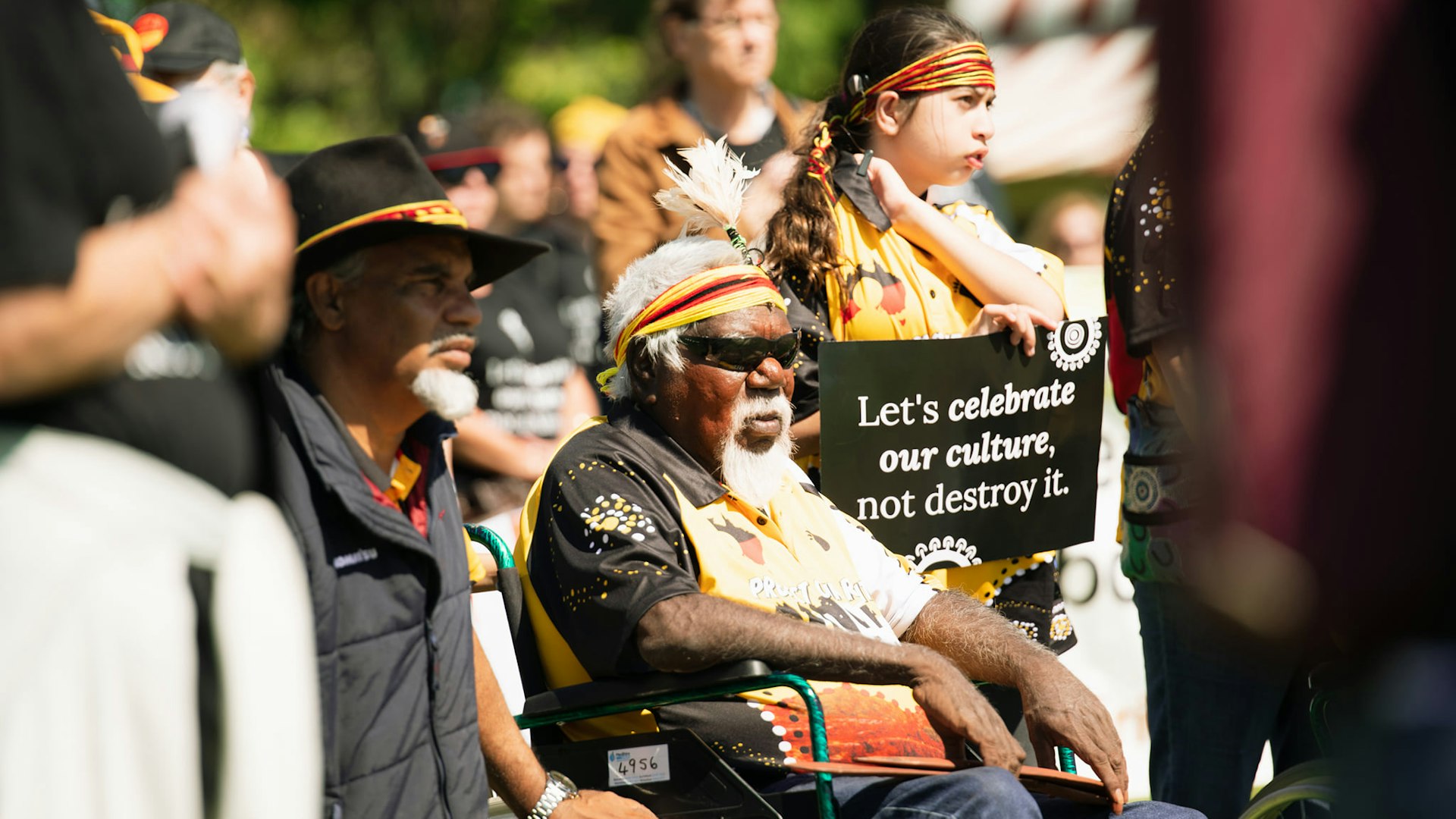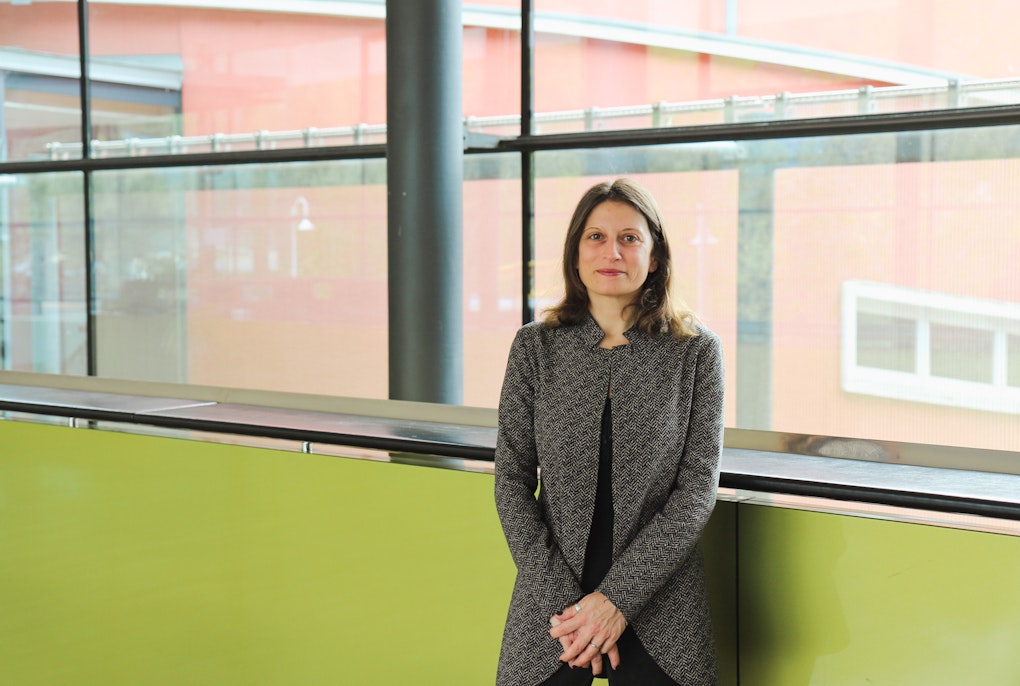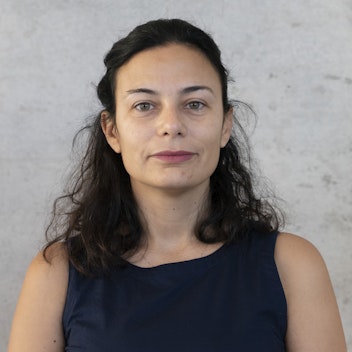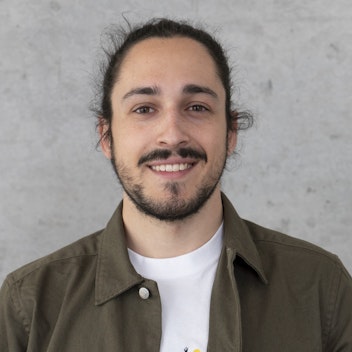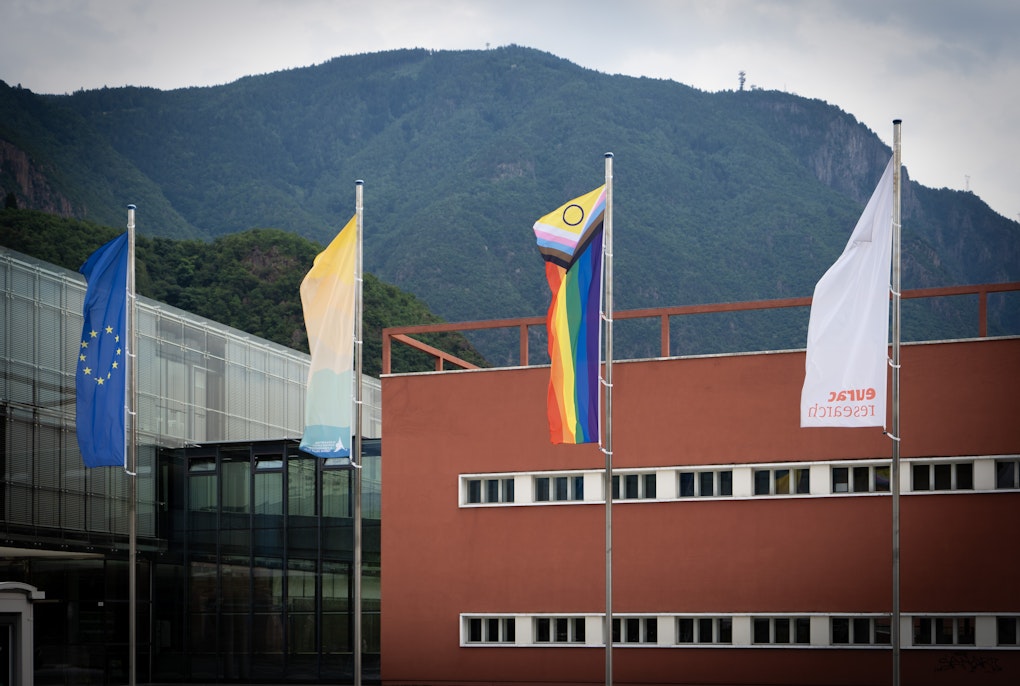Today, there are around 30,000 Western Australians with Noongar ancestry. Despite the history of oppression and marginalization, Noongar people have survived, and continue to assert their rights and identity.
Photo: South West Aboriginal Land and Sea Council | All rights reserved
On the frontlines of climate change, Indigenous peoples are often confronted with the degradation of their environments and thereby their livelihoods. In addition to these challenges, these groups also face the disappearance of their ancestral languages and the exploitation of their traditional lands, which are often rich in resources.
The Summer School on Human Rights, Minorities and Diversity Governance is a program organized by Eurac Research that provides a unique opportunity to postgraduate students, civil servants, journalists, NGO workers and others interested in expanding their knowledge on human and minority rights, diversity, and territorial governance.
Experts Alexandra Tomaselli and Bertus de Villiers share their thoughts about increasing understanding and skills to support cultural outcomes and local approaches to minority protection and diversity governance.
Who are Europe's Indigenous people, what are the challenges faced by their communities, and is Europe doing enough to uphold their rights?
Alexandra Tomaselli: Let's say that those that are considered the European "Indigenous peoples" are the Sami people who live in four countries, Norway, Sweden, Finland and Russia. However, if we include Russia in Europe, then there are up to 46 other Indigenous peoples that are recognized by the Russian states, for example, the Nenets, but also the very same Sami. And then there are also the Tatars in Ukraine. In Europe we have the Framework Convention on National Minorities, and the European Charter for Regional or Minority Languages, which are two key instruments of the Council of Europe in place to protect minority rights. Now, having said this, Indigenous peoples, particularly the Sami people, have declared that they don't want to be included in the monitoring cycles of the Framework Convention or the European Charter. At the same time, the European Union Accession Agreement of Finland and Sweden includes an addendum that gives the Sami a particular right to cross borders between Norway, Sweden for the reindeer migrations. So, if Europe is not doing enough, at least it’s offering some instruments the states can implement and Indigenous people can use.
Is there a difference between minorities and Indigenous peoples?
Tomaselli: It is very hard to say. There are national minorities, which tend to refer to minorities who may have a kinstate, like the South Tyroleans with Austria. But there are also the so-called state-less nations, such as Catalonia. Italy, for instance, recognizes “linguistic” minorities. However, there shouldn't be any imposition from the state or other national bodies to say, "You belong to a minority. You belong to an Indigenous people." The difference between minorities and Indigenous peoples, could be that minorities, strive to keep, conserve, and transmit their cultures and have a traditional attachment also to their territories, and an important historical presence on the territory. Indigenous peoples tend to have a stronger and spiritual relationship with their land, even in urban context, because the majority of Indigenous peoples are closely connected to the nature that surrounds them. Also, Indigenous peoples tend to be those that have been living since “ancestral times” over different territories and their existence, for European “eyes”, stemmed from the colonization waves, the colonization processes. Moreover, “minority” is more a category that has been created, that is, a socially constructed concept – after the religious wars in Europe and with the creation of the borders.
Indigenous peoples tend to have a stronger and spiritual relationship with their land, even in urban context, because the majority of Indigenous peoples are closely connected to the nature that surrounds them.
Alexandra Tomaselli
And the Ladins?
Tomaselli: And the Ladins, yes, they are recognized as a linguistic minority by Italian law, but they are also considered a national one within the Framework Convention on National Minorities. Italy has included the Ladin group in the list of minorities that fall under the scope of this instrument. However, both minorities and Indigenous peoples, have the right to self-identify (or not self-identify) as such. In other words, they can call themselves either a minority or Indigenous but cannot be subject to an imposition to be named as such.
It was different with the Ladins.
Tomaselli: Exactly. But the Ladins are subdivided into three provinces. They had their own traditional territory which then was subdivided.
Bertus, which communities are you working closely with? What challenges do they face?
Bertus de Villiers: I'm from South Africa, but I work with the Aboriginal communities in Australia. In the area that I work in, there are about 13 Indigenous communities. And what makes them unique is that although they come from a certain area, they are not the majority in that area. You can't give a form of territorial autonomy to them as one would in many federal countries. These people don't have a territory where they are the majority. Their territory is shared with other people. And so, the question arises, how can you protect the rights of these Indigenous people? And that is what I've been working on. The one group that has now had their rights restored is called the Noongar group. And it's quite an amazing agreement that was entered into with them, which I think in due course will get a lot of international attention. Basically, it involves about 30,000 people over an area of 200,000 square kilometers. So, it's the size of Belgium. And they share this with white Australians. So, it's not as if they have this land of their own. And what this agreement does, it gives the Noongar a legal personality. So instead of just saying, 'We the Noongar," they get a legal entity that can act for them. And this legal entity has certain powers and functions. It can look at management of land, at agriculture, at language, at education for children, at monuments, and so on. As far as I see, this is probably the most advanced non-territorial arrangement with Indigenous people in the world at the moment. The government has committed about $15 billion towards implementing it, over a period of 15 years. And it could set a standard for Australia. I think this can also be of use for Europe in terms of minority protection, a lot of minority groups don't have a legal entity that can act for them. And so, the question is, how does one give a group of people, a legal entity, a legal face? And I think that is what they've succeeded with now in Australia, to have an act that recognizes this group of people, it determines how you become a member and what powers the group has. This the most advanced and biggest agreement ever undertaken in Australia.
As far as I see, this is probably the most advanced non-territorial arrangement with Indigenous people in the world at the moment.
Bertus de Villiers
You both have experience working in a variety of other countries and with different Indigenous people. What are some stand out options for power sharing that you have encountered?
Tomaselli: Indigenous peoples have the right to autonomy or self-government, and this is recognized by a number of states across the world. In some cases, it's even constitutionally guaranteed like in the cases of Bolivia or Mexico. In other cases, it has been the result of peace accords, or even past arrangements that have then been developed into current autonomy of self-governing systems. That could be the case of Colombia, but even broadly speaking, of the reservations in the USA. There are a number of Indigenous autonomies, worldwide. The majority of them tend to face implementation issues, linked to a variety of problems. It also very much depends on the different context and issues that the countries or the territories are experiencing at that particular moment. What is also important to underline is that a lot of Indigenous peoples de facto exercise their right to autonomy: in the Peruvian part of the Amazon Forest, Indigenous peoples rights to autonomy are not recognized by the state or the government, but they do have their own institutions, their own schools, their own customary law, etcetera. And they simply exercise it. It's a de facto situation which also occurs in big cities with large economies, where Indigenous peoples relocate. For example, they establish their own institution and how to access to them. It's also important to remember that legal recognition is not always the only solution.
There shouldn't be any imposition from the state or other national bodies to say, "You belong to a minority. You belong to an Indigenous people."
Alexandra Tomaselli
Could you give any examples?
De Villiers: Yes, I can think of a few, the Māori in New Zealand, they have certain seats that are reserved for them, seven seats. And they sit in parliament, which is a form of power sharing. In South Africa, there is a house for traditional leaders where all the tribal leaders sit, and they basically form part of parliament. And so, whenever there's legislation which affects them, that legislation is referred to their house of traditional leaders. Currently in Australia, there's an effort to create what is called a voice for Aboriginal people, which is a bit like the Sami parliament. And the idea is that Aboriginal people must have the opportunity to speak about legislation that affects them. The problem with these things of course, is it's not always easy to define who is Indigenous, who is Aboriginal. When does the law affect Aboriginal people? If you really think about it, legislation affects all Australians or all Italians. When does a law just affect one community? It's a legal problem to define it, which also leads to a lot of social political dissatisfaction. Because Indigenous people join or create these advisory bodies, and think, "Well, now we will be asked our opinion." And then they find that their opinion is not asked. Or if they are, these opinions are often unheeded. And so, after four or five years, they become very disillusioned. They feel it's been a setup just to seem like legislators are active in this sphere. And so that is why it's very hard to make these things work. Disappointment sometimes leads to depression, alcohol, or substance dependence and so on…it’s a vicious cycle. You see, many, many Indigenous people are socioeconomically marginalized, they have high unemployment rates, high prison rates, amongst many other challenges. And so, the public perception when you speak about Indigenous rights, is negative. You can see it with Sinti and Roma in Europe, as soon you speak about them there’s a wall. In a certain sense, it's double discrimination because first of all, they're not empowered. And because they are not empowered, they don't go to school, they're not employed. And then you discriminate them again because they are in prison – and for that reason they become somehow even more discriminated against. Even in Europe that is so comparatively advanced in its democratic standards, people on both sides are struggling with these biases. It's a question of generations – because you pass the trauma you have to the next generation too.
When does a law just affect one community?
Bertus de Villiers
So last question. What interesting insights from this edition of the summer schools would you take away with you?
de Villiers: Well, I think what is interesting in the summer school is that the topic of Indigenous and minority rights is a real topic. It's a topic that affects the stability of countries, that affects peace. It's not just a sideline topic. If you don't accommodate Indigenous and minority rights, somewhere the frustration at not being recognized by having rights, turns into violence. Somewhere people start throwing stones, they start burning buildings. Each year I see that at the summer school, and each year there's senior academic civil servants attending because the issue of minority rights remain a very relevant issue. If I compare South Africa to Australia, the Aboriginal people in Australia don't do violence. There may be socio-economic problems, but they don't do violence. They don't march or protest and so on. So, when I worked for them, I once said to them, "Why don't we organize a march where you can have placards?" And they said to me, "We don't do it that way." They just don't. And because they don't do it that way, they get no acknowledgement or visibility. They just don't do it. They're not aggressive people. The same with the San in South Africa, the people who live in the bush in South Africa, they're not visible. So, they get nothing. But then you go and you throw stones or you set light to a building or you have violence and people accommodate you. Look at what happens here. Even here we had violence. Look what happened in Schleswig-Holstein, in Germany with the Danish and the Germans. In a certain sense, international law says to you, "You've got all these rights, but your rights will only become practical if there's violence." That's the sad part of it. But that's the truth.
About the Interviewed
Alexandra Tomaselli (PhD in Law) is a Senior Researcher at the Institute for Minority Rights at Eurac Research (Italy), and a Visiting Researcher at the Faculty of Legal Sciences, Universitat Rovira i Virgili, Tarragona (Spain). Since 2004, she has been working in various socio-legal research and international cooperation projects in Europe, Latin America, and South Asia. Her publications include the single-authored book Indigenous Peoples and their Right to Political Participation. International Law Standards and their Application in Latin America (Nomos, Baden-Baden, 2016) and the co-edited collection titled The Prior Consultation of Indigenous Peoples in Latin America: Inside the Implementation Gap (Routledge, London, 2019). Alexandra also acted as a member of the Committee on the Implementation of the Rights of Indigenous Peoples of the International Law Association (ILA) from 2014 to 2020.
About the Interviewed
Prof. Bertus de Villiers is an Adjunct Professor of the Law School of Curtin University and Distinguished Visiting Professor of the Law School of the University of Johannesburg. He is also a Member of the State Administrative Tribunal of Western Australia. He is admitted as a legal practitioner in South Africa and Australia. He is a Fellow of the Alexander von Humboldt Stiftung (Germany). Prior to emigrating to Australia, Prof De Villiers had close involvement with the constitutional drafting process of South Africa. He also was a member of the committee that demarcated the federal provinces. From 1999 to 2005 he was principal legal advisor to the Goldfields Land and Sea Council where he assisted Aboriginal people with the preparation of their land claims and other demands for social justice. Prof De Villiers has travelled widely and has undertaken research and lectured on constitutional and political developments in various countries. In recent years he has been invited to Ethiopia, Sudan, Pakistan, the Philippines, Indonesia, and South Sudan to give lectures on constitutional topics, for example federalism, human rights, minority protection, indigenous rights, and administrative law. Most recently he has been co-editor of Litigating the Rights of Minorities and Indigenous Peoples in Domestic and International Courts Brill (Leiden).
